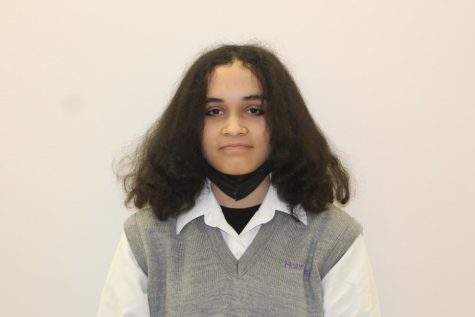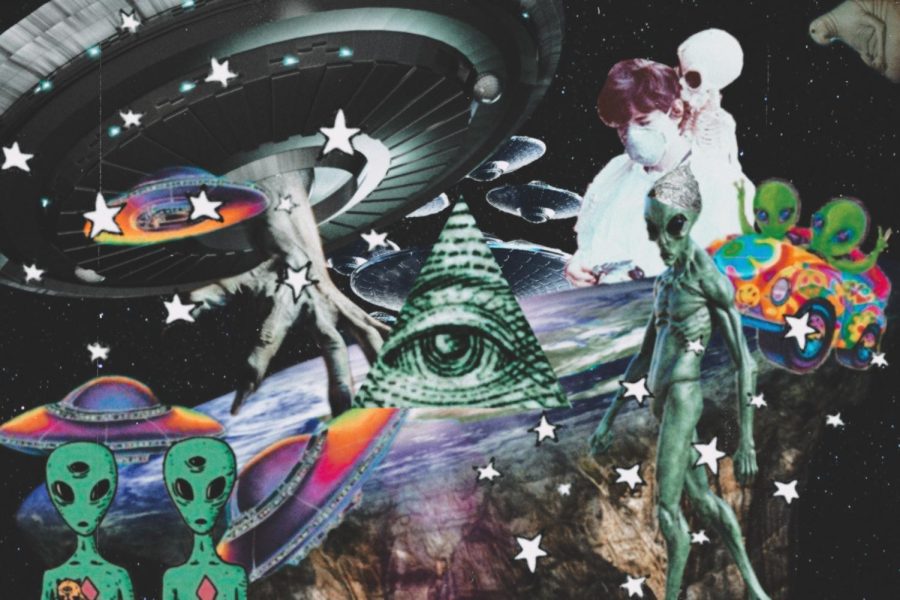The Perfect Recipe for Conspiracy Soup
Photo by Charlotte LeGrys
Conspiracy-related images, including aliens/UFOs, flat earth, and more.
The internet has been a great source of information for students, but is also a gateway to possibly dangerous ideology. This surge of misinformation could be very harmful, especially to a younger audience.
For the last decade or so, the vast majority of students have spent a considerable amount of their time on the internet, utilizing its various services to obtain information and communicate ideas. With such accessibility to the internet, it increases the opportunity for fraudulent information to be thrown in with reliable information.
“Everyone always has an opinion, and many opinions are uninformed. The more technology for communication gets democratized, the more uninformed opinions we’re gonna hear,” theology teacher Andrew Reinch said. “I don’t think it’s a bad thing, it just means we need to have better ways of sorting through it.”
When doing research or receiving information, many students may not be able to discern between truth and falsehood. While some misinformation can be trivial, for example Bigfoot sightings or celebrity gossip, a lot of these theories can be dangerous, especially to a younger and more impressionable audience.
“I think there’s a real difference between ones that undermine faith in government institutions and ones that are fun like the Lochness Monster, Bigfoot, or things like that,” stated social studies teacher Robert Christian.
Christian emphasized the importance of students identifying reliability as well as bias when consuming information.
“I think many students are aware that there are lots of bad sources out there, but that doesn’t make them any different really than older Americans,” Christian continued. “Especially because YouTube has a huge number of conspiracy theories and YouTube is more consumed by younger people rather than older people.”
Apps like TikTok and YouTube have been particularly popular among students. On these platforms, idolization of certain internet personalities is not uncommon.
“When we allow celebrities or people who are not qualified in any of these fields to tell us what to do and we believe it hook line and sinker, then it becomes dangerous,” English teacher Megan Minogue commented.
As well as being head of the English department at Holy Cross, Minogue also moderates the Young Progressives Club, where the importance of being educated on current events as well as history is emphasized.
“Really try and educate yourself so it’s not just ‘Oh, I saw this one clip of this person so I’m not going to vote for them because they said this one thing taken out of context,’” Minogue said.
She mentioned how students in particular do not do enough research into information they receive. Even when listening to seemingly legitimate news sources, she suggests that it is best to fact check what is being said, especially if it is a more serious matter of discussion.
“That’s their job, it’s to report the news, sometimes they, too, are twisting things,” Minogue warned.
According to Christian, solving this issue is no simple task.
“I think it’s hard to teach media literacy.” Christian said. “Media is changing. Kids rely on things like TikTok that older people are not on often, so teachers need to be on the cutting edge and their own biases could enter into the equation.”
A lot of this misinformation reaches young people faster than it can be debunked, leading students, as well as people in general, to need to be more cautious about the media they consume and the information they believe.

Charlotte LeGrys is part of the class of 2025 at AHC. She has interest in several subjects, art being a main interest. Charlotte also has a passion for...


